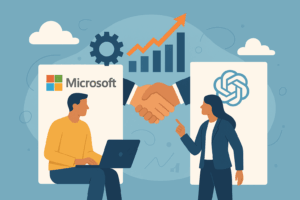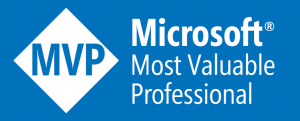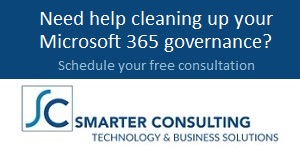The Next Chapter in the Microsoft and OpenAI Partnership
If you’ve been following the AI space, you know that the relationship between Microsoft and OpenAI has been one of the most important partnerships in tech history. On October 28, 2025 (yesterday), Microsoft announced what it called “the next chapter” in that partnership. And while it was filled with the usual corporate language and legal details (and some side-bar discussions on costs), it’s worth unpacking what it really means for everyday Microsoft Copilot users and for anyone who owns a little piece of Microsoft stock. I certainly wanted to understand, and so I thought I’d share my own summary and some of my thoughts on the matter.
So, what actually happened?
 At its core, this announcement marks a big evolution in how the two companies work together. OpenAI, which is the company behind ChatGPT, DALL-E, and the technology powering Copilot, is shifting to a new structure: a public benefit corporation, or PBC. That’s a business designed not just to make money but to serve a broader mission. They’ve been talking about this for some time, and some people out there (and some early investors) have been up-in-arms at the prospect and what it would mean for their investments. Microsoft, meanwhile, is taking an ownership stake valued at roughly $135 billion, giving it about 27 percent of OpenAI on a diluted basis.
At its core, this announcement marks a big evolution in how the two companies work together. OpenAI, which is the company behind ChatGPT, DALL-E, and the technology powering Copilot, is shifting to a new structure: a public benefit corporation, or PBC. That’s a business designed not just to make money but to serve a broader mission. They’ve been talking about this for some time, and some people out there (and some early investors) have been up-in-arms at the prospect and what it would mean for their investments. Microsoft, meanwhile, is taking an ownership stake valued at roughly $135 billion, giving it about 27 percent of OpenAI on a diluted basis.
That’s not pocket change, even for Microsoft.
But beyond the money, the announcement clarifies a few key things:
- Microsoft remains OpenAI’s frontier model partner, meaning it gets early access to the most advanced models (the ones that end up powering tools like Microsoft 365 Copilot).
- Microsoft’s exclusive rights to OpenAI’s intellectual property — including model access through Azure — are locked in through at least 2032, unless something seismic happens first: OpenAI declares that it has achieved artificial general intelligence, or AGI.
- When that day comes (and no, we’re not there yet), an independent panel of experts will verify the claim, not just OpenAI declaring it themselves.
- OpenAI can now collaborate with other companies on some products, but anything involving its APIs (the guts that make AI tools run) will still live on Microsoft Azure.
- And one big financial detail: OpenAI has committed to spending an additional $250 billion on Azure cloud services. This is a massive sign of confidence in Microsoft’s infrastructure.
In other words, Microsoft just cemented its position as the home base for OpenAI’s technology.
What this means for Copilot users
If you’re using Copilot in Microsoft 365, from drafting documents in Word, summarizing meetings in Teams, or generating insights in Excel, this partnership update should make you smile.
Here’s why:
1. Microsoft isn’t going anywhere
This new deal ensures that Microsoft keeps the keys to OpenAI’s best technology for years to come. You can expect the features you use today to keep getting smarter and faster, and not disappear into the wild because someone else cut a better deal.
For those of us who live in the Microsoft 365 ecosystem, that means continued investment and innovation in the products we use every day. Copilot is not a side project, but a core part of Microsoft’s future.
2. The AI horsepower just went up
The extra $250 billion of Azure usage is more than a business agreement: it’s a capacity boost. OpenAI’s reliance on Azure means Microsoft will continue to expand its data centers, optimize performance, and scale AI infrastructure globally.
This means faster responses, better reliability, and new capabilities baked into Microsoft 365 apps. You’ll likely see Copilot grow more integrated into your daily workflow, such as summarizing Teams chats, surfacing SharePoint content automatically, or managing tasks you didn’t even know you had.
3. The innovation pipeline just got wider
Because OpenAI can now collaborate with others (while still deeply tied to Microsoft), we might see fresh ideas cross-pollinate faster. Think of it as a “coopetition” model. OpenAI will be exploring new directions, and Microsoft will continue building those breakthroughs into products that regular users can actually benefit from.
That means new kinds of Copilot experiences could show up faster than before. Maybe that means creative tools, personal analytics, or even specialized “mini copilots” designed for different industries.
What this means for Microsoft stockholders (without the financial jargon)
Let’s be honest: most of us don’t read balance sheets for fun. But here’s the simple version.
This announcement signals long-term confidence, not just a quick win. Microsoft is betting heavily that AI will continue to redefine how we work, and it’s making sure the company stays at the center of that revolution.
That $135 billion valuation? It’s not just an accounting line. It’s a public declaration that Microsoft believes OpenAI’s technology is the foundation for the next decade of growth, from cloud computing to productivity apps and beyond.
The $250 billion Azure commitment is equally powerful. It tells Wall Street, “Hey, even if AI growth cools off elsewhere, our cloud business will keep booming.” Azure doesn’t just sell compute power; it sells the fuel that makes AI run.
For stockholders, that’s a signal of steady, defensible growth rather than a hype bubble. Microsoft is locking in both the brains (OpenAI’s models) and the muscle (Azure infrastructure).
Will this announcement make the stock skyrocket overnight? Probably not. But it strengthens Microsoft’s long-term position. And in the tech world, that’s where real value is built.
What’s next, and what to watch for
The one big “if” in all of this is AGI, or artificial general intelligence. This is AI that can think and reason as broadly as humans. If OpenAI ever declares it has achieved AGI, the current agreement changes dramatically. Microsoft’s exclusive rights would sunset, and the AI landscape would shift overnight.
That’s not happening tomorrow (thankfully), but the new agreement builds a clear roadmap for how both companies will handle that eventual reality.
In the meantime, Microsoft is free to pursue its own AI research — alone or with other partners — while still collaborating with OpenAI. It’s a smart move: diversify the future while protecting the present.
My take
If you’re using Copilot today, this deal means stability and progress. Microsoft has locked in the technology pipeline and ensured that your tools will keep improving. You’ll likely see more intelligent, context-aware, and personalized features appear in the months ahead, not fewer.
If you’re watching as a stockholder, it means Microsoft just deepened its moat. The company isn’t just betting on AI, but shaping the infrastructure of the AI era.
To borrow a phrase I’ve used before: every innovation feels impossible until someone automates it. Then we call it normal.
This latest chapter between Microsoft and OpenAI is one of those moments. It’s a quiet reshaping of what “normal” will look like for the future of work.




